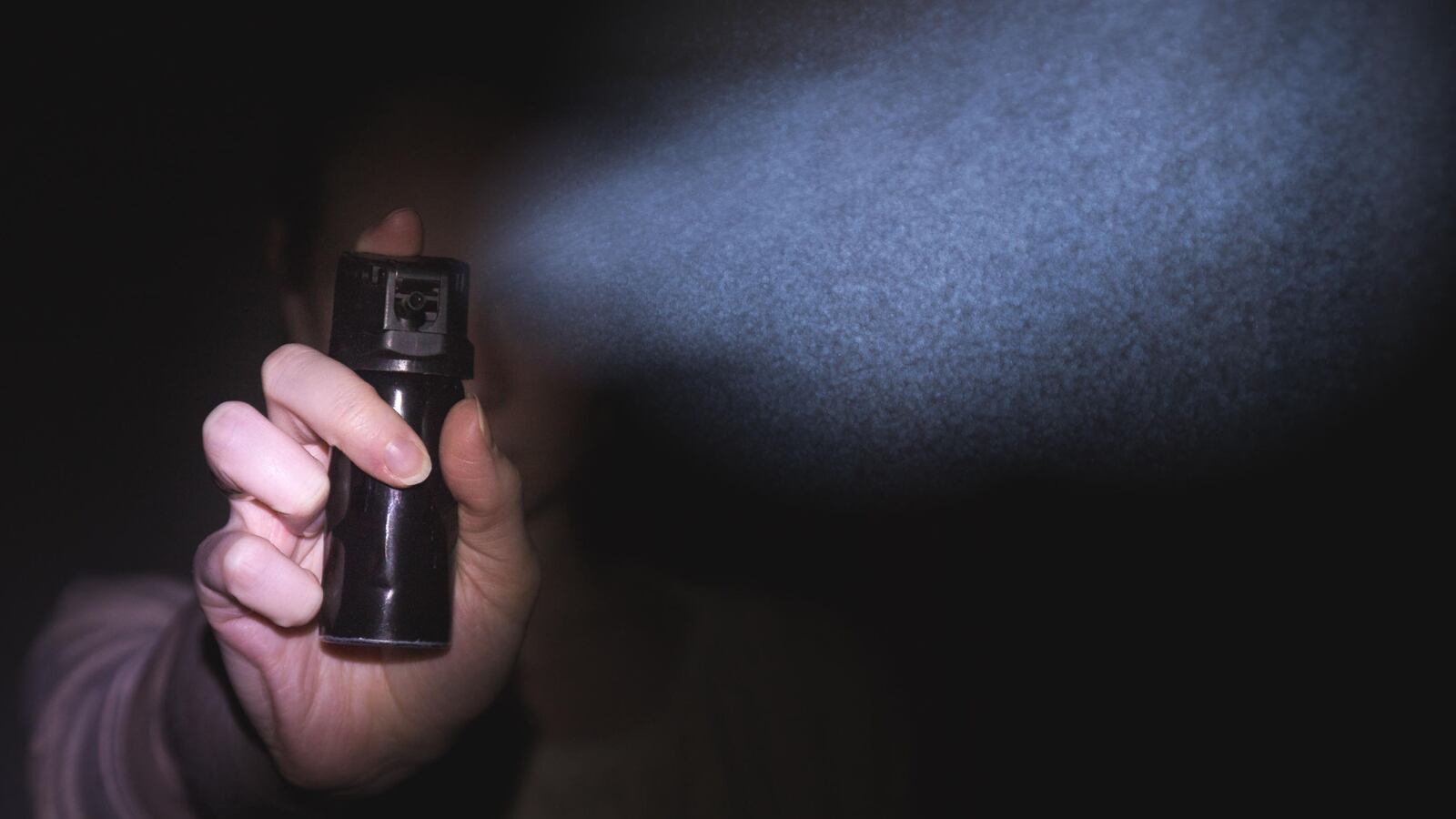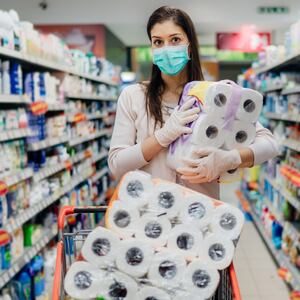I teach war correspondents how to respond if a colleague is tear-gassed or shot. A recent shopping expedition in Manhattan convinced me that everyone, not just the frontline reporter, needs these extreme first aid skills as well. A violent crime wave is hitting big cities, and I happened to stumble into the latest and was caught in a fog of pepper spray. Some extremely well-meaning bystanders wanted to help, but they actually risked making things worse. I’m sharing my best tips on how not to respond in case you chance upon a victim of Mace, its cousin bear spray, or worse.
The golden rule “Do no harm” is not just for doctors. It also applies to innocent passers-by who stroll down the street and see someone choking on a hotdog. Or hit by a bullet in the urban homicides spiking these days. By all means, everyone should be trained to administer first aid property. But If you aren’t, call 911 and wait for the medics to arrive. Don’t copy something you saw in a cop show.
Here’s what happened to me. It was a Tuesday afternoon. I wanted to get KN95 masks and mascara at the Bliss Beauty Supply on Broadway. I like to support my neighborhood stores. Plus, it was one of the few that stayed open during the spring lockdown, helping those of us with ingrown pedicures and split ends to remain reasonably groomed for la Zoom.
Waiting in line for the cashier, I vaguely noticed two young women in the wig department. An instant later they ran past with $250 worth of stolen hair and blasted me with pepper spray. “Thief! Call the Police!” the saleswoman hollered to me as we fell to our knees, blinded and gasping.
For anyone who hasn’t had the pleasure of being peppered, the chemical, capsaicin, makes your skin, eyes, and lungs feel like they’re on fire. So does bear spray, a favored weapon of the Capitol rioters. That’s because they’re derived from chiles, I rasped at the saleswoman to get out fast—she seemed frozen—and we staggered out the door, retching and tearing off our contaminated face masks.
Out on the street, we struggled to breathe. And to see. Then things got a bit more complicated.
“Water,” I wheezed to no one in particular.
A Good Samaritan offered me milk instead. “I saw someone do that on TV,” he said. He must have heard the myth that milk calms seared eyes. I’ve heard that milk thing at demonstrations around the world. Take my word: Don’t do dairy.
You have to quickly flush the pepper from your eyes and skin. Otherwise, it will linger and burn. But you can’t pour anything on your face. Milk, for example, has bacteria and lactic acid that can irritate even more.
I knew the guy was trying to help but I swatted the carton away, only to be handed a seltzer. Here’s another piece of advice: don’t douse contaminated eyes with carbonated beverages. In fact, you should never put fizzy drinks into your eyes, period. That can cause severe ocular damage.
A woman offered to splash still water at my eyes. Yes, that’s the right thing but not from a bottle that’s already opened and half drunk. During a pandemic, don’t take chances with strangers’ saliva.
Finally, someone got me a sealed Poland Spring. Through blurry tears, I saw two cops pull up. One took statements while the other mansplained. “Lady, don’t use water,” he lectured. “I’ve been to a lot of protests. There’s talk it doesn’t work. “
“Talk?” I wanted to scream. “By whom? Didn’t you have firsthand experience?”
It wasn’t worth arguing. Water is the best thing. As for peppered skin, if you happen to be near someone with a mild dish detergent like Dawn or an anti-acid such as milk of magnesia, ask them to dab some mixed with (clean) water. I always bring a bottle to demonstrations. It neutralizes the sting.
Hope for relief rose as an ambulance screeched up. A kindly EMT led me inside the vehicle where he fiddled as he hooked up the saline drip to drench my eyes. “I’ve never done this before,” he apologized. “I hope I’m doing it right.” It splattered in my ear and all over my coat, but he finally got it into my eyes. Tip Five: You need to rinse for at least 20 minutes. Otherwise, the corneas could be burned.
With sight sufficiency restored, I looked at my phone and realized that I had to rush home for a Zoom panel. I thanked the saline hose guy and grabbed a few surgical masks for the walk home. Tip Number Six: Always load up on free masks.
The general advice to refrain from DIY first aid applies to myriad other circumstances, like car wrecks or shootings. Especially if the victim is knocked out and can’t tell you what’s wrong. Make an emergency call and stick around until the professionals arrive. If the victim’s alert, offer your phone to call their family or friends. If you know how to move them or apply pressure to a wound, by all means do so. And if they’re lying in the road, try to make sure no one runs them over.
Do not, I repeat, do not, apply the Heimlich maneuver to choking victims. Instead smack the choker on the back between the shoulder blades. Do not experiment with dragging bodies without experience in stabilizing the head and neck. Do not tear off your belt as a tourniquet if you’ve never practiced the technique before. The wrong move could turn someone into a paraplegic or lead to an amputation.
These are a lot of “do nots”.
One more. If a finger gets severed, don’t put it directly on the ice. That will damage the flesh. Besides, a finger is not an oyster. Instead, put the half-digit in a Ziploc bag, surrounded by ice on the outside.
In the immortal words of the German poet Johann Wolfgang von Goethe, “There’s nothing more frightful than ignorance in action.” Sign up for a first aid course today.
Judith Matloff teaches conflict reporting at Columbia’s Graduate School of Journalism. She’s the author of How to Drag a Body and Other Safety Tips You Hope to Never Need.







